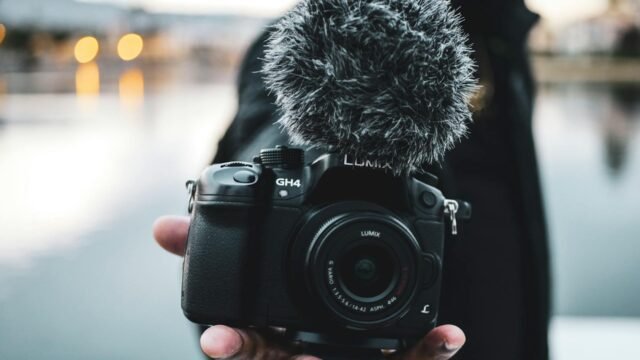When we think of videos, visuals often come to mind first. However, audio quality plays an equally—if not more—important role in producing a professional-looking video. Whether you are creating content for social media, corporate presentations, or film making, poor audio can easily overshadow even the most stunning visuals. In fact, viewers are more forgiving of low-quality visuals than they are of poor sound. Let’s dive into why audio quality is crucial and how to improve it, even on a budget.

Table of Contents
Audio Engages Viewers Emotionally
Sound is an essential tool for storytelling. Music, dialogue, and sound effects help evoke emotions and guide the viewer’s experience. A well-produced soundtrack can set the tone of your video, evoke feelings, and communicate messages that visuals alone cannot. Whether it’s the suspenseful build-up in a documentary or the upbeat music in a commercial, audio creates a layer of emotional depth that draws the audience in.
Poor-quality audio, on the other hand, distracts viewers and diminishes their engagement. Imagine a video with muffled voices or overpowering background noise—viewers are likely to lose interest quickly.
Clear Audio Improves Comprehension
Viewers are more likely to stick with a video if they can clearly hear and understand what’s being said. This is particularly important for tutorial videos, educational content, and interviews. Even if the visual quality is exceptional, viewers won’t grasp the message if they can’t hear the dialogue clearly.
Background noise, echo, and uneven sound levels can disrupt comprehension. For instance, in instructional videos, poor audio makes it difficult for viewers to follow along, reducing the video’s overall value.
Professional Sound Reflects Professionalism
People associate clear, well-balanced audio with professionalism. Whether you’re creating videos for your business or for personal use, clean audio shows that you take your work seriously. It demonstrates attention to detail and enhances your credibility. In contrast, noisy, poorly recorded audio can make your content feel amateurish, regardless of how well-shot the footage is.
Investing in a decent microphone can make a world of difference. Even on a budget, an affordable external microphone vastly improves sound quality compared to a camera’s built-in mic.
Audio Quality Helps Define the Atmosphere
Audio doesn’t just help tell a story—it also sets the atmosphere. Background music, ambient sounds, and voice tone all contribute to building an immersive experience. For example, subtle sound effects, like rustling leaves or distant city noise, can establish a scene’s context or amplify the impact of your visuals. Good audio ensures that viewers feel connected to the scene rather than being pulled out of the moment by distracting audio issues.
Ways to Improve Audio Quality on a Budget
You don’t need a high-end recording studio to achieve good audio quality. With the right techniques and affordable tools, you can significantly enhance your video’s sound. We do have the Ultimate Guide to Creating Videos on a Budget, check it out when you are done reading up! Back to the audio talk.
- External Microphones: An external microphone can dramatically improve your audio. Affordable options include lapel (lavalier) mics or shotgun microphones that can be connected directly to your camera or phone. These mics pick up cleaner, more focused sound compared to the built-in microphones on cameras and smartphones.
- Recording Environment: Pay attention to where you record. Choose a quiet, controlled environment with minimal background noise. Use soft materials like blankets, curtains, or foam to reduce echo in your space. If you’re recording outdoors, try to avoid windy or crowded areas.
- Audio Editing Software: Use software to clean up your recordings. Even free programs like Audacity allow you to reduce background noise, adjust volume levels, and improve clarity with a few simple edits.
- Windshields and Pop Filters: For outdoor recording, using a microphone windshield helps block out wind noise. Similarly, pop filters reduce the harsh “p” and “s” sounds that can distort dialogue, improving overall clarity.
Syncing Audio with Video
Even with perfect audio recording, syncing sound with video is critical. Misaligned audio can ruin the immersion of your content. Most editing software, including free options like DaVinci Resolve and iMovie, allow you to sync audio tracks with ease. Taking the time to align audio with visuals ensures a smooth and seamless viewing experience for your audience.
Conclusion
In conclusion, audio quality is crucial to creating professional, engaging videos. It enhances viewer comprehension, sets the tone, and reflects professionalism. With a few simple tools and techniques, even budget-conscious creators can produce videos with clear, high-quality sound. Don’t let poor audio undermine the quality of your content—invest in sound, and your audience will thank you for it.


One thought on “Why Audio Quality is the Key to a Professional Video”